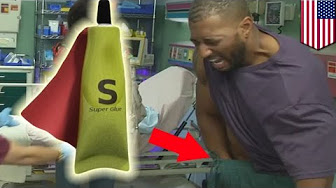What you don't know about bladder cysts
Cysts can form around the urinary bladder. A person may experience painful or frequent urination, and the condition may be mistaken for cystitis.
So now you need to know more about bladder cysts
A cyst is a closed sac, having a distinct membrane and division compared with the nearby tissue.
Hence, it is a cluster of cells that has grouped together to form a sac
(not unlike the manner in which water molecules group together, forming
a bubble); however, the distinguishing aspect of a cyst is that the
cells forming the "shell" of such a sac are distinctly abnormal (in both
appearance and behaviour) when compared with all surrounding cells for
that given location. It may contain air, fluids, or semi-solid material.
A collection of pus is called an abscess,
not a cyst. Once formed, sometimes a cyst may resolve on its own. When a
cyst fails to resolve, it may need to be removed surgically, but that
would depend upon its type and location.
Symptoms
Most bladder cysts are tiny and cause no symptoms. A person tends to only experience symptoms when the cysts have grown large or when they have burst and become infected.- pain when urinating
- blood or off-colored streaks in the urine
- a painful need to urinate
- a continuous, urgent need to urinate
- inability to control the bladder
- excessive urination at night
- pain in the lower back or pelvic region
- foul- or sour-smelling urine
Symptoms like these can also point to interstitial cystitis, a chronic
bladder disease with no known cause. It often leads to severe pain
during urination and very frequent urination, which can occur every ten
minutes.
People with interstitial cystitis may experience worse pain when the bladder is full and feel relief when they urinate. They can also experience pain during sexual intercourse.
If you suspect this symptoms kindly go for a thorough diagnosis before it gets out of hand.


.jpeg)




.jpeg)

.jpeg)
.jpeg)